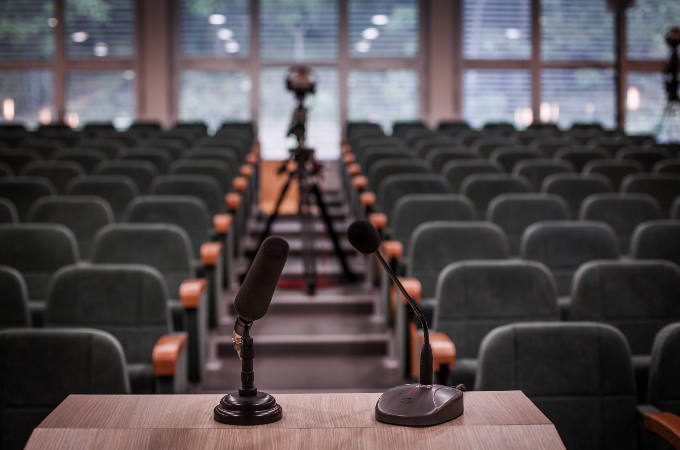Events industry language – 5 terms you must learn


Whether you’re organising a milestone birthday party or a corporate conference, dealing with professionals in the events business is a whole lot easier if you speak their language. That said, every industry has its own ‘jargon’ and events managers and venue finders are no different.
Starting at the beginning of the alphabet, we’ve put together 5 essential terms that you’re highly likely to come across when you’re searching for your ideal venue, and explain what they mean.

1 – Auditorium Seating
Business conferences and meetings can be set up in a number of room layouts that are particularly beneficial for the levels of participation and interaction required. Auditorium seating, also known as theatre style seating, is characterised by rows of chairs facing a speaker or stage. It’s used for large events, speeches and presentations where little interaction is needed. Other types of event room layout include Classroom, Banquet/Cabaret, Boardroom and U-Shape/Horse Shoe.
2 – A/V (Audiovisual)
Audiovisual equipment includes projectors, screens, sound systems, video and staging – anything technical that’s to do with sound and sight. Often, it is mentioned together with IT/Computer facilities, as in AV/IT. Many venues have preferred AV suppliers or an on-site AV technician (and maybe IT support staff too), with the responsibility for operating and supporting all equipment during the event, making sure there are no technical glitches.
3 – Blank Canvas Hire
Also known as Dry Hire Venues, these are venues that you can hire without any additional facilities or features – literally all you get is the bare event space. No furniture, no catering, no entertainment or any type of installation is included. It’s a great choice for those who want to retain total control over every aspect of the event, happy to source their own suppliers and equipment, and working with their own interior designers to create a space that’s completely unique.
4 – Break-Out Space
Break-out rooms are smaller meeting rooms that are used when a larger group breaks into smaller sub-groups. These rooms are often located adjacent to the main conference or meeting room that your event takes place in and can have a variety of specific uses to support the event. Break-out rooms are perfect for accommodating more intimate sessions and small workshops, and also lend themselves well as refreshment areas.
5 – Black Tie
When it comes to dress code, there are several tiers of formality. Black Tie is the most formal dress requirement and always means a tuxedo/dinner suit for men and evening dress for women. Next comes Business Attire – formal daytime workwear such as business suit and tie – followed by Smart/Casual, a middle ground between formal business wear and off-duty wear. Even with Smart/Casual wear, it is usually advisable to veer towards the ‘smart’ end of the spectrum, just to be on the safe side.

Related Posts

Want to book a live band? 7 key questions to ask the venue
If you’re looking for professional advice to book a hospitality event or milestone celebration, our team here at Function Fixers are seasoned party and event planners. Not only will we…

How to choose the right conference venue for your event
Finding the best venue for your business conference, corporate training day or other company event can be tricky. Whether you’re in London or the provinces, the sheer choice of venues…

How to get the best value out of your venue finder
If you’ve ever organised a corporate function, business event or private celebration, you know how time consuming this task can be. From arranging the perfect venue to checking all the…

4 top tips for viewing the venue before you book
Before you book any venue, it is highly recommended that you arrange a site visit first. It’s essential to experience first-hand the atmosphere of the venue, its location and surroundings,…
